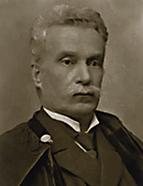

He advocates for a reform that adopts the broadest perspective in order to achieve the most profound radical change, calling for a top-down restructuring of education, including not only the two existing academies of fine arts (Lisbon and Porto), but also general education in the High Schools and artistic education in the professional schools of arts and crafts — and specifically the teaching of arts applied to industry, which at the time occupied hundreds of workers at night.
Faithful to the European movement that sees drawing as the basis of all the plastic arts, to the international experiences of England, Germany and Austria as models of the Artes e Ofícios (Arts and Crafts) movement, and to the artistic training of workers as emancipation and a fight against poverty, Joaquim de Vasconcelos found the weak determinations of the reform to be lacking, its centralising weight unbearable and the omission of music, an art that had mobilised him so much, incomprehensible.
The three central issues addressed in the Report (reforming the teaching of fine arts at the Lisbon and Porto academies; organising a central museum; and implementing measures to preserve and repair monuments) reflect Joaquim de Vasconcelos's sense of distance from the commission. To do so, it is essential to help the fine arts academies. For Joaquim de Vasconcelos, it is important to take action at the level of the teaching of drawing, the first reform of the fine arts reforms (in primary schools, where pupils destined for the manual professions came, and in vocational education, to try to reform the disintegration and indiscipline fostered by the suppression of the old craft guilds), giving priority to the escolas de aplicação (professional schools of arts and crafts) over the academies.
For the commission, the idea was to establish a central museum in Lisbon — at that time envisioned as a museum of art and industry — that would gather the nation's most valuable treasures and make them available for public contemplation. For Joaquim de Vasconcelos, it's a question of creating museums for industrial arts , in other words, museums with an immediate practical and useful component. He argues that the existing museums are irrelevant, pointing to their lack of planning and method, their failure to serve aesthetic and educational purposes, and the fact that they are driven merely by a superficial, careless enjoyment. Finally, for the commission, the focus was on implementing measures for the conservation and repair of monuments and artistic objects. Without outright disagreement, Joaquim de Vasconcelos proposed a different solution: to remove the art collections from the Academia de Belas-Artes de Lisboa [Lisbon Academy of Fine Arts], where they were deteriorating and becoming mouldy; to appoint custodians responsible for the care of art objects in public buildings and those held by corporations; and to establish an archaeological commission tasked with overseeing the nation's underground treasures. He also advocated for the implementation of the first and most urgent measure: the establishment of an authority to prevent indiscriminate demolitions and to oversee the restoration of monuments.
This work is financed by national funds through FCT - Foundation for Science and Technology, I.P, in the scope of the projects UIDB/04311/2020 and UIDP/04311/2020.
